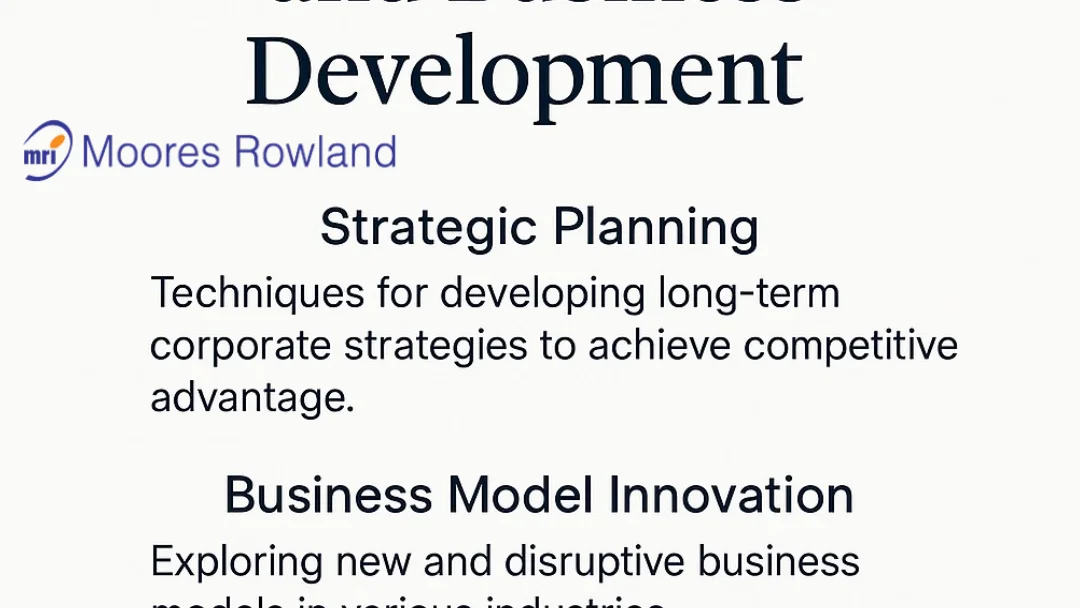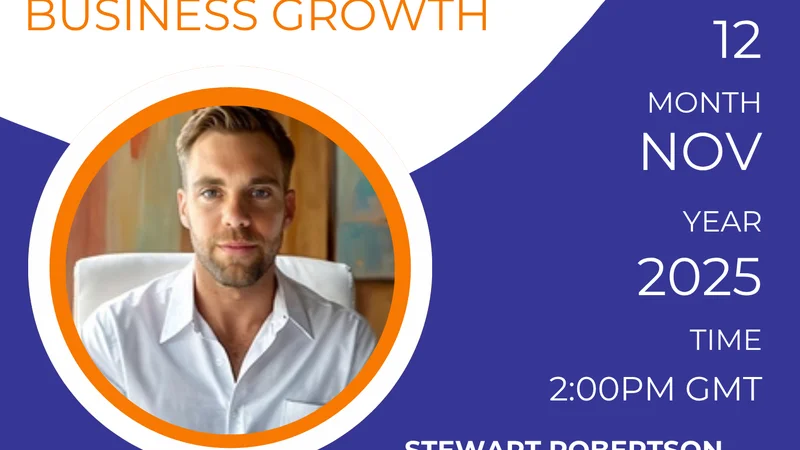Corporate Strategy and Business Development: Navigating the Future of Competitive Growth
In today’s dynamic business landscape, companies must go beyond short-term tactics to create sustainable value. This is where corporate strategy and business development come into play. A well-crafted corporate strategy provides the vision and direction f
•
April 8, 2025

- Strategic Planning: Building a Sustainable Competitive Advantage
Strategic planning is the foundation of corporate strategy. It involves a disciplined approach to setting long-term objectives, assessing internal and external environments, and aligning organizational resources with defined goals.
Key Techniques in Strategic Planning:
- SWOT Analysis: Evaluates strengths, weaknesses, opportunities, and threats to inform strategic direction.
- PESTLE Analysis: Examines external macro-environmental factors such as politics, economy, society, technology, legal, and environment.
- Porter’s Five Forces: Analyzes industry competitiveness and helps identify areas where firms can achieve differentiation or cost leadership.
- Balanced Scorecard: Aligns strategic objectives with performance metrics across financial, customer, internal processes, and learning/growth perspectives.
Strategic Planning in Action:
Leading corporations like Apple and Amazon have shown how a focused and adaptive strategic plan can turn technological trends and market insights into long-term dominance.
"Strategy is about making choices, trade-offs; it’s about deliberately choosing to be different." – Michael Porter
- Business Model Innovation: Staying Ahead in a Disruptive World
Business model innovation involves redefining how value is created, delivered, and captured. In an age of digital transformation and shifting consumer behaviors, innovating the business model is often more powerful than innovating the product itself.
Emerging Models Across Industries:
- Subscription-Based Models: Used by platforms like Netflix and SaaS companies, offering recurring value and predictable revenue.
- Platform-Based Models: Uber, Airbnb, and Amazon use platforms to connect providers and users, creating scalable ecosystems.
- Freemium Models: Common in tech and apps (e.g., Spotify), providing a basic version for free while monetizing premium features.
- Circular Economy Models: Focus on sustainability by designing waste out of the system (e.g., IKEA’s buy-back program).
The Power of Innovation:
Companies that embrace business model innovation can disrupt entire industries. For example, Tesla doesn’t just manufacture cars—it’s transforming energy, mobility, and software through a vertically integrated model.
- Growth Strategies: Expanding Through M&A and Partnerships
While organic growth is vital, companies often scale faster through strategic mergers, acquisitions, and partnerships. These methods enable access to new markets, technologies, and customer bases.
Common Growth Tactics:
- Mergers and Acquisitions (M&A): Combine entities to gain market share, diversify offerings, or eliminate competition.
- Strategic Alliances: Collaborative agreements between companies to achieve shared goals without formal mergers.
- Joint Ventures: New entities created by two or more firms to enter new markets or leverage combined resources.
- Franchising & Licensing: Scalable models used in retail, F&B, and technology sectors.
Real-World Examples:
- Facebook’s acquisition of Instagram allowed it to dominate social media beyond its original platform.
- Starbucks and Nestlé's global coffee alliance enabled massive distribution expansion through a strategic partnership.
- Microsoft’s acquisition of LinkedIn opened new avenues for data integration and business tools.
Conclusion
Corporate strategy and business development are not just about growth—they’re about intelligent, sustainable, and strategic growth. In a world defined by change, organizations must continuously revisit their strategies, innovate their business models, and pursue growth avenues that align with their vision and core strengths.
Investing in these pillars ensures that companies are not only reacting to change but driving it — building lasting value in the process.
Call to Action
Whether you’re a startup founder, a C-suite executive, or a strategic advisor, mastering these aspects of strategy and development will equip you to lead with clarity and impact. Stay tuned for more insights, or contact us for advisory services tailored to your business goals.
Related

What Is Generative Engine Optimization (GEO)
The Next Evolution Beyond SEO The world of search is evolving faster than ever — and Generative Engine Optimization (GEO) is leading the transformation. As AI-powered tools like ChatGPT, Per...
Read more
Join us for our upcoming MRGN Open House: Global Expansion & Business Growth!
Join us for our upcoming MRGN Open House: Global Expansion & Business Growth! Discover how businesses can successfully navigate international markets and achieve sustainable growth. 📅 Da...
Read moreIESBA Publishes New Guidance to Support Implementation of Standards on External Experts and Sustainability Assurance
The International Ethics Standards Board for Accountants (IESBA) today released two new staff publications to enhance understanding and support global adoption and implementation of its ethics st...
Read more